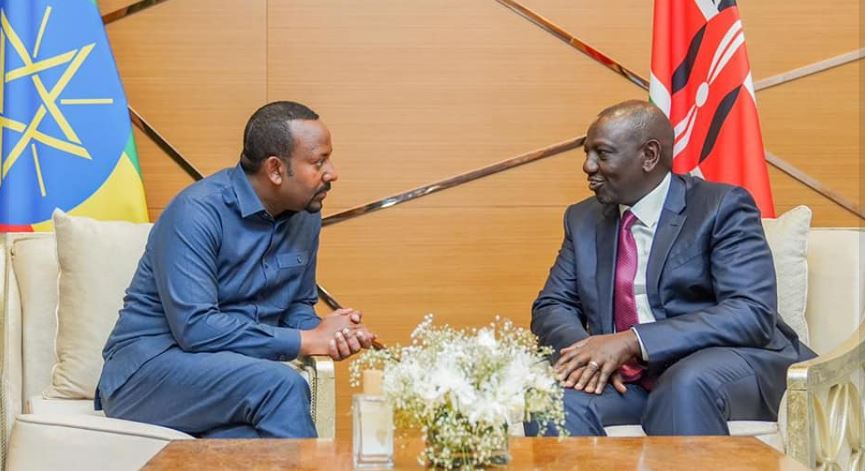Ethiopia-Kenya Trade Opens AfCFTA’s Real-World Test
Ethiopia’s first AfCFTA shipment to Kenya signals Africa’s trade integration in motion. With GDP growth near 7 % and 5 %, and currencies stabilizing (USD/KES ≈ 129.4), the two economies activate a USD 3.4 trillion market—testing Africa’s logistics, FX, and policy cohesion for global investors.

Ethiopia’s first shipment to Kenya under the African Continental Free Trade Area (AfCFTA) marks a tangible step in Africa’s pursuit of intra-continental integration — a test of whether policy ambition can translate into measurable trade. The export, part of the AfCFTA’s Guided Trade Initiative (GTI), includes coffee, meat, edible oils, textiles, and fresh produce. Ethiopia, which ratified AfCFTA in 2024 and joined the GTI in 2025, now positions itself to deepen economic ties with Kenya, East Africa’s financial hub, and to shift from rhetoric to practice in regional commerce.
For investors, the move signals the gradual emergence of functional trade corridors across the continent. Ethiopia’s GDP is projected to grow 6.5 percent in 2025, while Kenya’s stands near 5.2 percent, creating one of Africa’s strongest bilateral growth pairings. Yet logistics remain the limiting factor: freight along the Lamu Port–South Sudan–Ethiopia (LAPSSET) corridor costs about USD 0.11 per ton-kilometer, roughly twice the Durban–Gaborone benchmark. Customs clearance times still average 72 hours, compared with 24 hours in Mauritius, eroding competitiveness by an estimated 0.4 percentage points of GDP annually.
The structural challenge is currency and payment friction. Both nations still rely on dollar intermediaries for settlement, though Afreximbank’s Pan-African Payment and Settlement System (PAPSS) pilots are underway within COMESA and the EAC. The Kenyan shilling (USD/KES ≈ 129.4) remains regionally stable, while the Ethiopian birr (USD/ETB ≈ 142.7) continues its controlled depreciation under the IMF Extended Credit Facility. Inflation differentials — 4.9 percent in Kenya versus 23.4 percent in Ethiopia — reinforce the risk asymmetry and the need for hedged trade finance mechanisms before AfCFTA can scale.
Financial integration offers the missing bridge. Kenya’s Nairobi Securities Exchange (NSE: NASI) has become East Africa’s primary liquidity pool, hosting cross-listed equities like Co-operative Bank (NSE: COOP) and Kenya Airways (NSE: KQ), while Ethiopia’s Securities Exchange (ESE), slated for launch in 2025 with IFC and FSD Africa support, is expected to provide the region’s next investable platform. These capital-market links, if supported by regional clearing systems, could convert AfCFTA from a trade treaty into a continental asset-pricing framework — where credit spreads, FX volatility, and logistics costs are priced across integrated markets rather than isolated economies.
The macro backdrop remains supportive. Brent crude (ICE: LCOc1) trades near USD 85 per barrel, and the Dollar Index (DXY: DX-Y.NYB) hovers around 105.7, reflecting a mild easing of dollar strength that favors frontier FX stability. On the debt side, Kenya’s 2032 Eurobond (KE2032 ≈ 9.2% YTM) and Ethiopia’s sovereign paper in secondary markets both mirror tightening spreads as investor confidence recovers. The MSCI Frontier Markets ETF (NYSEARCA: FM) has gained roughly 4.5 percent year-to-date, hinting that frontier allocations are slowly rotating toward East Africa amid improving macro signals.
Still, the economic materiality of Ethiopia-Kenya trade remains modest. The initial shipment’s volume is undisclosed, and both economies face infrastructure and non-tariff hurdles — from standards compliance to currency convertibility. Yet even limited flows carry signaling power: they confirm institutional readiness within the AfCFTA architecture and showcase that East Africa’s integration can proceed pragmatically, one corridor at a time.
For global markets, the development matters less for scale than for precedent. Africa’s USD 3.4 trillion integrated-market potential remains largely theoretical until bilateral trade under AfCFTA achieves transactional momentum. Ethiopia’s entry demonstrates that the framework can mobilize real exports from a landlocked, reforming economy into a diversified, market-linked peer. In a world re-fragmenting along geopolitical lines, such South–South trade gains relevance as supply chains diversify away from Asia and toward emerging frontier networks.
If sustained, Ethiopia’s AfCFTA participation could unlock regional credit enhancements, logistics securitizations, and FX-hedged investment instruments that deepen East Africa’s capital formation. For investors tracking the evolution of African frontier risk, this isn’t a logistics story — it’s the early architecture of a trade-backed asset class.





